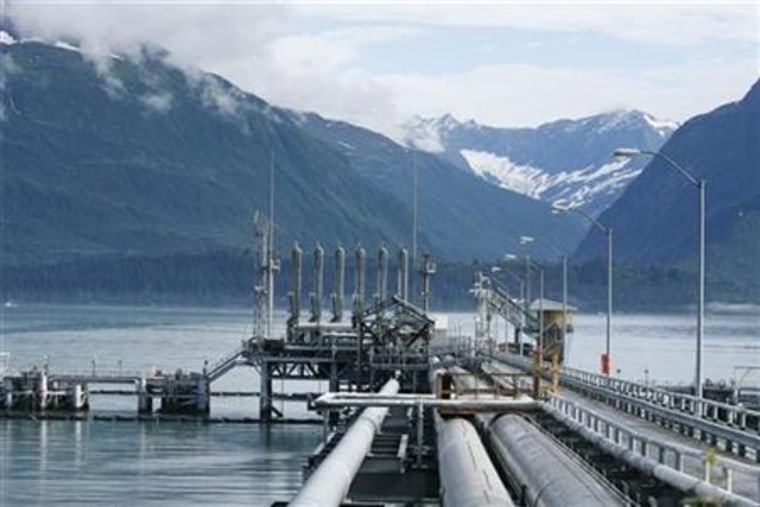A U.S. government investigation of the Trans Alaska Pipeline has found potentially major safety issues on the line that ships 12 percent of domestic oil supply, making its operation risky until repairs are made, according to a letter sent by regulators to the operator and viewed by Reuters on Friday.
The 800-mile line known as TAPS appears to have "multiple conditions" that "pose a pipeline integrity risk to public safety, property or the environment," according to the Feb. 1 letter to operator Alyeska from the U.S. Department of Transportation's pipeline safety division.
The DOT investigation follows a Jan. 8 leak on the line that forced it to shut down for several days in precarious winter conditions. The closure shut in millions of barrels in production and caused U.S. oil futures to rise for days.
The letter, called a "notice of proposed safety order," requests that Alyeska take several measures to mitigate risks along the line, including replacing some piping. DOT told Alyeska to expect a forthcoming "safety order" requiring action.
"It appears that the continued operation of the affected pipeline without corrective measures would pose a pipeline integrity risk to public safety, property, or the environment," the letter said.
Heightened scrutiny of the 33 year-old Alaskan line that ships 640,000 barrels per day follows a series of pipeline mishaps in Alaska over recent years and a dangerous mid-winter shutdown of TAPS last month. Investigators said they suspect corrosion may be to blame for a January leak.
Alyeska said it is already responding to several of the government's concerns and has requested a meeting with safety inspectors next week.
"We do disagree with some of the proposed findings and actions," said Alyeska spokeswoman Michelle Egan.
However, she said "there are already some that we've initiated."
Major Alyeska shareholders are BP with the largest stake, ConocoPhillips and Exxon Mobil.
Regulators gave Alyeska 30 days to respond in writing to the notice. They did not order any shutdown of the line or set out enforceable timelines for repairs. DOT told Alyeska it will be allowed to contest the findings of the investigation.
Probes as far back as 2008 found issues including internal corrosion that had thinned pipeline walls by up to 80 percent in some spots, the letter said. While some measures have been taken since to mitigate corrosion risks, closer monitoring is required, it added.
Among other areas of concern is TAPS' ability to withstand a prolonged shutdown during Alaska's frigid winter months, when the risk of ice plugs and wax deposits in the line could make operations hazardous, according to the letter.
The January leak underscored those risks, the regulators wrote. During that episode, TAPS requested emergency permission to restart the line before a leak on the line could be fixed, arguing that freezing of the line's contents could pose grave risks.
TAPS may be required to add tank storage facilities along the line, boost the frequency of examinations carried out by PIG machines that inspect the pipeline for corrosion, and provide plans to more closely monitor stretches of so-called "dead leg" piping, or low-flow areas around pump stations where cleaning is difficult and corrosion more likely, regulators warned. The most recent leak occurred at one such spot.
Also of concern to regulators is the 6 percent annual reduction of oil flow on TAPS, whose rates have diminished from nearly 2 million barrels a day in the late 1980s to around 630,000 bpd this year. Less flow can make pipelines more prone to corrosion or freezing.
The Department of Transportation may require TAPS to provide quarterly safety reports to regional inspectors in the future, to show it is fully complying with safety requirements, according to the letter.
Nearly all of Alaska's 650,000 barrels per day of oil output flows along the TAPS system. Top shareholder BP also controls Prudhoe Bay, the largest U.S. oil field, which delivers oil to market through the TAPS system.
Alyeska's last major oil leak occurred in May 2010 when several thousand barrels of oil spilled from a pump station. The 33 year-old line has been the subject of regulator scrutiny in recent years.
A BP line at Prudhoe Bay leaked during 2006 in an incident caused by corrosion, requiring repairs and pipe replacements that shut in millions of barrels of U.S. oil production.
